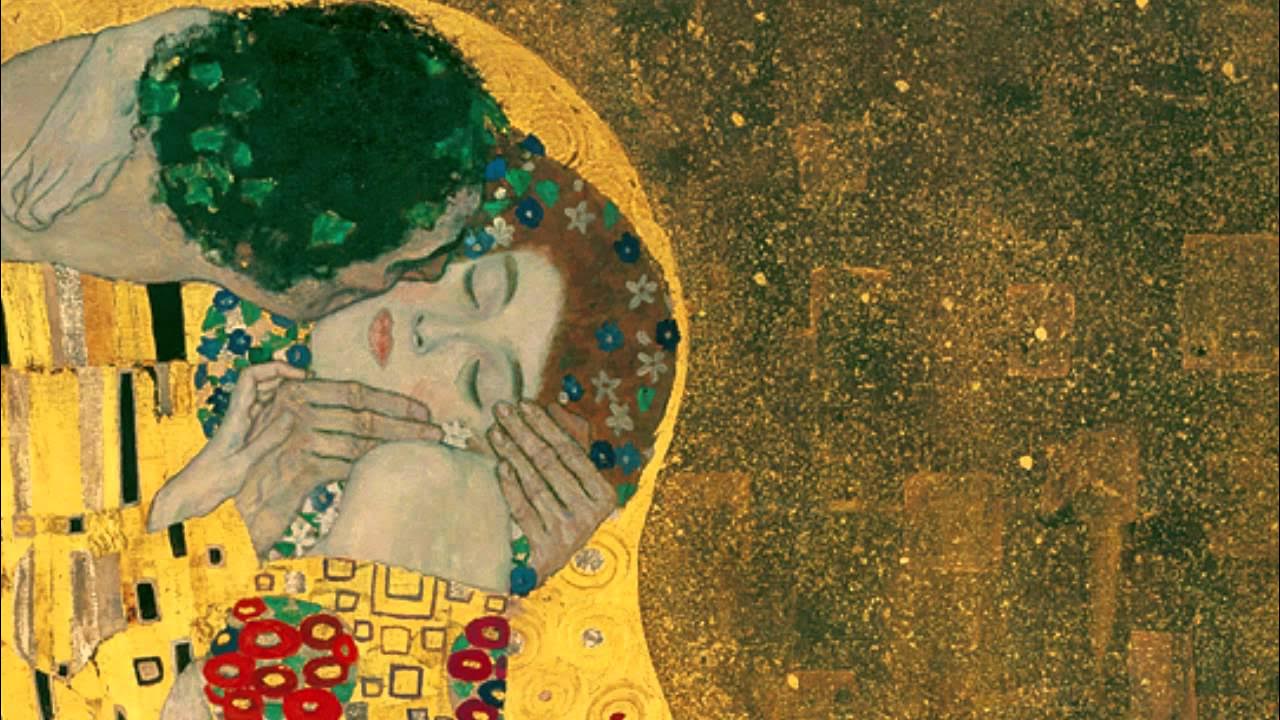
Robert Draws – Gustav Klimt’s The Kiss is one of the most iconic and romantic works of art in history. Created in 1907-1908, this masterpiece encapsulates the deep emotions of love and intimacy. The painting features a couple locked in a passionate embrace, surrounded by golden patterns that enhance the feeling of warmth and closeness. Klimt’s unique combination of symbolism, gold leaf, and intricate details gives the artwork a timeless quality. This exploration delves into the romance and meaning behind The Kiss, as well as its lasting influence on both art and culture.
At first glance, The Kiss radiates romance. The intimate position of the couple suggests a moment of pure affection and connection. The couple, whose identities are somewhat ambiguous, are draped in golden robes, signifying both luxury and transcendence. The male figure is shown gently holding the woman, his face tenderly pressing against hers. The woman seems to be lost in the moment, her eyes closed and her arms resting around his neck.
The embrace is an important symbol of unity. The two figures are not only physically close but appear as if they are becoming one. Klimt’s choice to use gold leaf to paint the couple’s clothing suggests that the love shared between them is sacred and divine. The golden backdrop, filled with delicate patterns, creates a sense of harmony, reinforcing the idea that their connection is ethereal and transcends the physical world.
“Read about: The School of Athens: Raphael’s Masterpiece of Renaissance Philosophy”
Symbolism plays a major role in the romantic qualities of The Kiss. Klimt was influenced by the Symbolist movement, which sought to convey emotions and ideas through symbolic imagery rather than realistic depictions. The golden aura that envelops the couple symbolizes not only their love but also purity and spirituality. The background patterns, consisting of squares and circles, create a dreamlike atmosphere, as though the lovers exist in a world removed from time and place.
The flowers and intricate designs on the robes also contribute to the symbolism of love, fertility, and nature. These designs seem to bloom and intertwine, suggesting the natural flow of affection and the idea of growth within a relationship. The use of gold, an element associated with both divine light and material wealth, elevates the love between the couple to a higher, almost celestial level.
In The Kiss, the gender roles of the couple are highly significant. The male figure appears dominant and protective. He holds the woman tightly in his embrace. His patterned robe suggests strength and authority. The female figure is more passive and receptive. Her body language suggests surrender to his affection. This dynamic mirrors traditional gender roles in early 20th-century art. However, there is a sense of equality in their connection. The female figure actively participates, wrapping her arms around him. This mutual connection transcends typical power dynamics in earlier artworks.
“Read more: Thomas Keller: Master of Fine Dining and the Genius Behind The French Laundry”
Over the years, The Kiss has become a symbol of love and passion. Its impact extends beyond the art world into popular culture. The image of the golden couple has been reproduced in countless forms, from posters and postcards to fashion and design. The romantic ideals it represents are universally understood and appreciated, making it one of the most recognizable works of art in the world.
The painting has also been a source of inspiration for many contemporary artists. Klimt’s use of gold leaf and intricate patterns influenced not only visual artists but also designers and architects. The use of luxurious materials and decorative details in modern design can trace its roots back to Klimt’s innovative style in The Kiss. In a way, the painting continues to shape how we view art, love, and beauty.
Gustav Klimt’s The Kiss is more than just a beautiful painting. It represents the power of love and intimacy in a way that resonates across cultures and generations. The emotional depth of the piece, paired with its striking symbolism and gold leaf details, makes it one of the most cherished works of art in the world. Through its exploration of romance, Klimt created a timeless masterpiece that continues to inspire and captivate audiences.